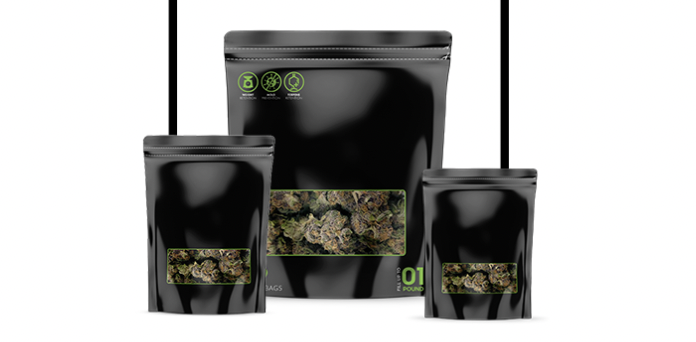Leveraging Material Science to Maintain Product Quality from Takedown to Consumption
Grove Bags | Adam Slyter
Whether you’re packaging cannabis in polymer bags, glass drams, plastic jars, or your parent’s old Tupperware, the home you choose for your harvest, from the second you chop to the moment someone lights it up, has a dramatic impact on the quality of your final product. There exists plenty of ‘conventional’ wisdom out there on which containers cultivators should choose, whether during the cure, for long term storage, or on the dispensary shelf; it’s why you can almost smell a photo of a room full of yellow-top totes or gallon Mason jars. But assuming their popularity makes turkey bags, glass canisters, or pop-tops the best choice for putting your best buds forward would be a sore mistake.
Who’s on tote-spraying duty today?
These bags are perfect for creating moist birds, or dry mids.
Like many parts of the cannabis supply chain, the packaging and storage sectors of our industry have done their best to patchwork existing solutions to fit the plant’s unique needs, to some degree of success; throughput is through the roof in many markets, and the current paradigms do work for pushing pounds. However, California is no longer the only “mature” market, and as an industry, it’s time we move past using workarounds and start focusing on purpose-built solutions that do more than just increase volume, especially in times when consumer buying power is low.
Cannabis packaging should be optimized, front to back, to truly preserve the delicate compounds (terpenes and cannabinoids) that give your flower its value. And “packaging” is more than just what ends up on the shelf.
Say you’re harvesting your main colas – your truly A-1 yield. You make your cut carefully to ensure you have a good amount of stalk to grip, lest your gloves rip away delicately developed trichomes, which you patiently awaited under bated loupe to turn a perfect amber/cloudy mix. You’ve readied your 27-gallon tote box nearby, freshly cleaned, sanitized, and on its third harvest. You gingerly rest the branch into the bottom of the tote. All is well.
What you can’t see is that the cloth you used to dry out your tote beforehand built up some extra static electricity on the side walls. Almost unseen, hundreds of glandular heads get ripped away from the stalks of your trichomes, destined only for the drain or someone’s finger-hash. Sure, lining totes with contractor bags keeps you from cleaning totes as long, but the same damage to the trichome is likely. These pitfalls exist at every step of the process, unfortunately, because until the last few years, nobody had ever approached material sciences development with cannabis at the forefront of their design. But since TerpLoc® hit the market in 2016, thousands of growers have caught onto the true value of using the right tool for the right job.
TerpLoc® bags maintain RH and weight, prevent mold growth, and preserve terps – the nose knows.
Adding TerpLoc® to a harvest plan, like the bag’s protectant film itself, is multi-layered, and touches each part of the process. That initial pulldown can go straight into TerpLoc® liner bags, which have anti-static properties to prevent trichome loss. The moisture from the branches will activate the rest of the layers too, protecting your harvest from UV light, oxidation, and the rapid evaporation of volatile terpenes. From there, after you’ve dried and bucked your plants, trim directly into TerpLoc® wicket bags or opaque pouches. And since TerpLoc® is the only material on the market that allows for a truly hands-off, no-effort, burp-free cure, maintaining the perfect humidity level inside the bags’ microclimate and having just enough breathability to allow for off-gassing, your crop is ready to go as soon as you’re satisfied with the cure. Whether you’re shipping it out in bulk to distributors, or packing up eighths, quarters, halves, and ounces, your flower can stay protected by TerpLoc® from the very first cut to the very last bowl.

